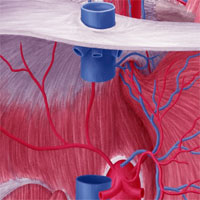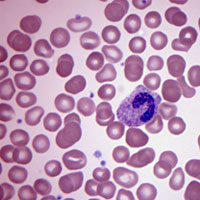Tag: study

Associations With Psychological Outcomes Among Family Members of Mechanical Ventilation Survivors
In this multicenter cross-sectional survey, we interviewed family members of mechanically ventilated patients at the time of transfer from the ICU to the hospital ward. To our knowledge, this is the first study to explore... read more

Does Respiratory Variation Of Inferior Vena Cava Diameter Predict Fluid Responsiveness In Spontaneously Ventilating Children With Sepsis
IVC collapsibility has poor test characteristics for predicting fluid responsiveness in spontaneously ventilating children with sepsis. Thirty-nine fluid boluses were recorded in 33 children, 28/39 (72%) of which met criteria... read more

The Right Tool for the Right Patient
Resuscitative TEE in the diagnosis of massive PE in the ED. We have multiple tools in the ed that allow us to assess patients rapidly. But of course, you must use the right tool for the patient. transthoracic echo (TTE) can... read more

Temporal Trends in Incidence, Sepsis-Related Mortality, and Hospital-Based Acute Care After Sepsis
Owing to increasing incidence and declining mortality, the number of sepsis survivors at risk for hospital readmission rose significantly between 2010 and 2015. The 30-day hospital readmission rates for sepsis declined modestly... read more

Videographic Assessment of Pediatric Tracheal Intubation Technique During Emergency Airway Management
Intubators commonly exhibited suboptimal technique during tracheal intubation such as bending deeply at the waist, having their eyes close to the patient's mouth, failing to widely open the patient's mouth, and not elevating... read more

Single-Center Experience With Venovenous ECMO for Influenza-Related ARDS
Influenza-related ARDS has a high mortality rate and patients treated only with mechanical ventilation have worse outcome than those managed with VV ECMO. More liberal use of ECMO should be considered in patients with influenza-related... read more

Interprofessional Care and Teamwork in the ICU
A robust body of evidence supports an interprofessional approach as a key component in the provision of high-quality critical care to patients of increasing complexity and with increasingly diverse needs. "Interprofessional... read more

Improving Survival Rates From Sepsis
Sepsis kills more Australians each year than breast cancer and prostate cancer combined. Daily, as many as 20,000 people worldwide are thought to die from this deadly disease. Also known as blood poisoning, sepsis is a life-threatening... read more

Noninvasive Ventilation in Patients With Do-Not-Intubate and Comfort-Measures-Only Orders
A large proportion of patients with do-not-intubate orders who received noninvasive ventilation survived to hospital discharge and at 1 year, with limited data showing no decrease in quality of life in survivors. Provision... read more

Decision-making in the detection and management of patients with sepsis in resource-limited settings
We read with interest the study by Andrews et al. and the related correspondence from Shrestha et al. We share the concern that clinical examination (and observations) appear(s) to be perceived as relatively unimportant in... read more

Survival and Safety Outcomes of ICU Patients Discharged Directly Home
Recruited discharged directly to home patients experienced very good 8-week postdischarge outcomes with 0% mortality and a low rate of ICU readmission (1%) or ward readmission (4%), but not an insignificant rate of emergency... read more

Too Much SALT on the ICU?
There has a been a little flutter of activity in the #FOAMed world this week about two trials published in the NEJM on the subject of balanced fluids in the care of critically ill patients, and also on admitted patients in... read more

Comparison of Etomidate and Ketamine for Induction During Rapid Sequence Intubation of Adult Trauma Patients
Induction doses of etomidate during rapid sequence intubation cause transient adrenal dysfunction, but its clinical significance on trauma patients is uncertain. Ketamine has emerged as an alternative for rapid sequence intubation... read more

Haloperidol Prophylaxis in Critically Ill Patients with a High Risk for Delirium
The use of the delirium prevention protocol seems to result in improvement of several delirium outcome measures. Prophylactic treatment with low dose haloperidol in critically ill patients with a high risk of delirium likely... read more








